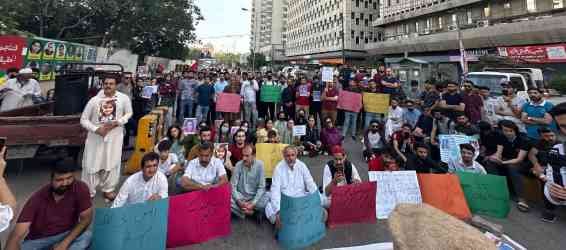by Ghulam Amin Beg
A recent ruling by Gilgit-Baltistan’s Chief Court has stirred up anger and disbelief among the people, and rights defenders, shedding light on the sensitive topic of child marriage once again. The case of Falak Noor has revealed significant differences between medical assessments, legal interpretations, and the protection of minors’ rights.
It appears that both the medical board and the two-judge bench of the Chief Court were not sensitive enough or failed to fully consider the implications of child marriage and the legal definition of minors.
The core issue at hand revolves around a fundamental question: How can we, as a society, tolerate such ambiguity when it comes to establishing the age of a minor? The court disregarded the official Form B of the National Database and Registration Authority (NADRA) and the birth certificate issued by the hospital where the child was born, for reasons unspecified. The assessment conducted by the medical board has raised significant concerns regarding its accuracy and reliability.
This sets a dangerous precedent. Even when the court issues an unpopular and unjust verdict, it is crucial, especially in cases where a minor is given the choice to marry or to stay with an abductor-husband as in this instance, that the court considers the minor’s best interests. Factors such as her maturity, comprehension of the consequences of marriage, and whether she is being coerced or pressured into marriage should have been considered.
The court also had a responsibility to consider the laws and regulations about child marriage in that jurisdiction, as well as child protection laws. The complete order of the case should have been reviewed and analyzed to understand the reasoning behind the decision.
Prima facia, it appears that the court’s decision did not prioritise the well-being of the minor or ensure that any determination regarding child marriage was made with her best interests in mind. Despite concerns about the minor’s safety and well-being, the court did not take action to intervene and protect her rights and interests until she reached adulthood. Only saying “they should remain in Gilgit-Baltistan territory” is not enough protection.
This indifference is not only regrettable but also sets a dangerous precedent for similar cases, potentially encouraging the abduction of minors into wedlock. Civil society and rights activists must elevate this issue to the Supreme Appellate Court, advocating for the establishment of a minimum marriage age of 18 to safeguard the well-being of minors. By advocating for stricter regulations and their enforcement, we can shield vulnerable children, particularly girls under 18, from the harmful consequences of early marriage.
Moreover, when courts are faced with making decisions concerning the futures of minors, prioritizing the best interests of the child must always be paramount. In cases like Falak Noor’s, where a minor is presented with the choice to marry or return to an abductor-husband, the court’s responsibility should extend beyond legal formalities. Factors such as the minor’s level of maturity, comprehension of the implications of marriage, and whether there is any coercion involved must be meticulously evaluated.
Furthermore, it is non-negotiable to adhere to international conventions such as the Convention on the Rights of the Child (CRC) and the Convention on the Elimination of All Forms of Discrimination Against Women (CEDAW). Pakistan’s commitment to these treaties necessitates taking proactive measures to combat child marriage and protect women’s rights.
Popular social media perceptions suggest that in the context of Gilgit Baltistan, this unfortunate evaluation of the medical board and the court’s decision may have been influenced by sectarian, monetary, and political expediencies, in addition to a lack of consideration for child protection rights and their multifaceted dimensions.
We can draw valuable lessons from other Muslim-majority countries such as Saudi Arabia, Iran, and Egypt. These nations have made significant progress in prohibiting child marriage through the implementation of robust legal frameworks and court rulings. For example, in 2019, Saudi Arabia raised the legal marriage age to 18 for both genders, in line with international standards. Similarly, Iran and Egypt have enacted laws aimed at combating child marriage, acknowledging the harmful effects it has on the well-being of minors.
Even in Pakistan, despite challenges, strides have been made in addressing child marriage. The PPP-led Government in Sindh deserves commendation for enacting the Sindh Child Marriage Restraint Act of 2014, which prohibits marriages under 18 and imposes penalties for those involved. Furthermore, landmark court cases like the 2018 ruling in the Saima Waheed case have reaffirmed the illegality of child marriage and emphasized the significance of protecting minors’ rights.
In conclusion, the women’s caucus of the Gilgit Baltistan Assembly must take proactive steps by introducing a resolution to establish a minimum age limit of 18 years for marriage. Additionally, all Bar Associations, human rights bodies, and civil society organizations must support this initiative and advocate for the enactment of robust child protection laws.
Only through collective action and unwavering advocacy can we work towards a future where the rights of every child are respected, protected, and upheld.

Ghulam Amin Beg is a development and policy analyst based in Islamabad. He has worked for national and international organisations with over 20 years of experience in leading, developing, managing, and evaluating community-driven development. He writes essays and comment pieces on social, political, and governance issues for the High Asia Herald.

